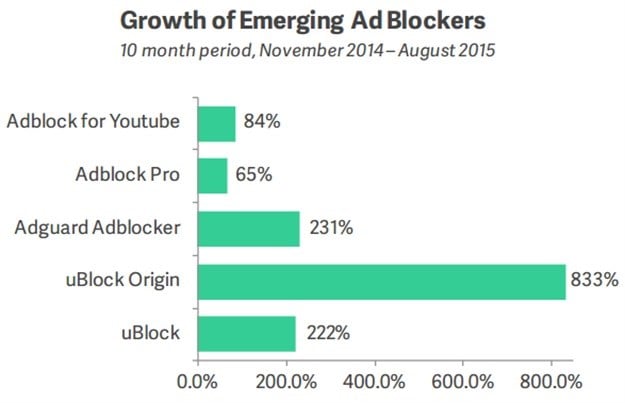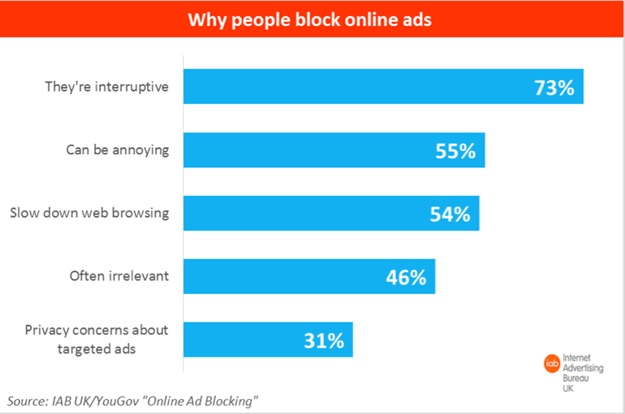
Top stories


Marketing & MediaThe Carling Black Label Cup and the campaign that changed fan engagement
Caxton Media 6 hours




More news






ESG & Sustainability
Kumba Iron Ore champions inclusivity with donation to neurodiverse learners







Attempts to block advertisers were hitting the market fast and furious as early as the 1960s. The battle against adverts goes back many decades ago. Remember an American inventor Robert Adler who made life of leisure more comfortable and lazier for couch potatoes by experimenting with a process that would enable remote control of a television using radio waves?

The device was perfected in the 1960’s, as Adler’s remote control was modified to allow ultrasonic signals to communicate complex commands to TV sets, enabling the operator of the remote to block ads by changing the channel during a commercial break – without leaving the comfort of their reclining chair.
In the 1970s, mechanical preset buttons allowed vehicle drivers to not only change the car radio station while safely watching the road, but it also gave listeners a quick solution to skipping ads.
Today, we have ad blocking, PVR technology, commercially-free satellite radio, presets technology for blocking radio ads, DVR commercial skipping feature, and many more technologies that enable the ease at which we skip ads and make ads almost redundant.
In many countries, millions of consumers are empowered to block telemarketing calls by simply registering their phone number on the “Do Not Call” websites.
Following on the footsteps of Mozilla, creators of the Firefox Web browser who introduced a Do Not Track feature that blocked advertisers from profiling a user’s identity and browser history. Today’s browsers all offer standard features enabling users to surf the web in secret, or employ ad blockers that completely free mobile and desktop browsers from banner ads – literally eliminating them from view by preventing the browser from loading the ad.
Technologies that consumers are using to prevent the download or display of advertising. Ad blockers exist for most desktop web browsers and are now beginning to impact mobile web browsing as well.
Content publishers need to stop thinking that serving advertisements, that NOBODY WANTS, to internet users is the only way to monetise content.
Browser extensions are the most common forms of ad blocking. Browser extensions can:

According to 2015 global report on ad blocking by PageFair, a company specialising in helping websites survive the rise of ad blocking, the latest data really puts into perspective just how fast the ad blocking market is growing, with the global use of ad blockers being up 41% (to 198m) between Q2 2014 and Q2 2015.
These are the quick facts about ad blocking based on the 2015 Ad Blocking Report By PageFair:
Major players in the ad blocking industry
Adblock Plus leads the charge, but is not the only name in ad blocking. It dominates the market with 51% of global share, but this program shouldn’t be confused with the separate AdBlock, which itself covers 38% of the market. UBlock Origin leads the pack of emerging ad blockers at a rate of 833%.

Nobody wants to be tracked and advertised to constantly, period.
History shows us that ad blocking innovation and consumers’ demand for it is nothing new. Panic over recent methods of digital ad blocking must be put in proper historical context. The consumers’ long-held desire to skip ads must be acknowledged.
In the US, PageFair found that consumers are more likely to block ads with concerns that they are using their personal data or that they are simply becoming too frequent. Misuse of personal information was the primary reason to enable ad blocking. An increase in the number of ads was more important among millennials. US ad blocking grew by 48% to reach 45 million active users in 12 months up to June 2015.
The leading reason cited by UK consumers is that ads are ‘interruptive’ – 73% of people using ad blockers use them for this reason. Further reasons include that ads ‘can be annoying’ and that they ‘slow down web browsing’. UK ad blocking grew by 82% to reach 12 million active users in 12 months up to June 2015.
According to The 2015 ad blocking report by PageFair, South Africa's ad blocking usage and penetration stands at only 2%. The ad blocking software usage stood at 1% in 2014.
I ask myself, "Why is the usage of ad blockers in South Africa so very low compared to the US, UK and other European countries?" Could the answer be that many South African internet users find ads to be relevant and useful? Is it perhaps because they are not well aware of ad blocking? If most South African consumers don’t find digital advertising irritating but rather that it helps them find things that are relevant to their daily lives and experiences, they would surely be angered when they learn that their rapidly depleting data is consumed by intrusive advertising.
My bet is that most South Africans are unaware that ad-blocking tools even exist, otherwise they will never allow intrusive advertising to gobble up their mobile data, especially when you consider how hard it is to get that data in the first place due to high levels of unemployment. South Africa's unemployment rate hit record high when it increased to 26.7% in the last few days.
A lack of awareness about ad-blocking software could be the cause and answer to why South Africans would rather tolerate the annoyance of ads that consume their data than go to the trouble of finding and installing special ad-blocking software.
I cannot fathom a situation where a South African is very happy and impressed when upon visiting a website, they often find themselves waiting and waiting for advertisements to load. Video starts playing automatically, and animated ads jump in front of what they were there to see. The seconds tick by, followed by annoying and intrusive banner ads. Eventually, after so much personal data has been consumed and lost, and if they are lucky to have any data left, they get to see what they were there to see in the first place.
Very soon, South Africans will realise that life and experience on the internet does not have to be this difficult. There are easy ways to block such annoyances.
Not fetching a file or blocking it, which is what ad-blockers do, equates to pure, unadulterated internet experience and joy, except in the mind of advertisers, who think they have a right to put their stuff in consumers' faces. It's the consumers’ computers, smartphones, and internet connections. So it is their right to choose which files are fetched or blocked. When the advertisers pay for the consumers' connections, then they have a right to show consumers what they want, not before.
According to a research note from Strand Consult, published by Fin24 Tech, at least a fifth of your mobile data is consumed by advertising – a situation that has prompted the rise of ad-blocking software according to international research.
The Strand Consult research reveals that 20% of data traffic on a smartphone is intrusive advertising.
“This is frequently traffic that subscribers don’t want and haven’t asked for. Video ads, in particular, slow the internet experience and can render in such a way to obstruct the actual content the user requests, not to mention burn out the device battery and run up the customer’s data charges,” Copenhagen-based Strand Consult said in a statement.
In SA, mobile services make up 24.7% of household budgets, almost five times higher than the International Telecommunication Union (ITU) guideline of 5%.
Mobile advertising is big business as companies rush to place their ads on small screens. According to eMarketer, mobile advertising in 2016 will hit $100bn, accounting for more than half of digital advertising spend.


Before we begin to answer, the key fact to acknowledge is that: Consumers do not hate adverts; they simply hate irrelevant ads. Hence they resort to ad blocking!
The key for the marketing and advertising industry is to challenge ourselves to serve better by offering more relevant ads to our audiences. We must be mindful of their frustrations with ad clutter and its negative impact on the brands we serve. We must treat consumers as individuals, rather than a demographic.

When it is not appropriate, relevant and specific to their particular shopping need at the time of that need.
Ad blocking is not the end of the marketing and advertising industry. It’s simply an evolution point. Marketers and advertisers understand that advertising provides a valuable service in shaping and informing consumer behaviour, accelerating the economy, and enabling wide consumption of low-cost or free products, such as apps or music, where costs are deferred with advertisements.
Take the necessary steps to reduce the annoyance so that consumers won't turn to ad blockers. Stop exposing wrong ads to wrong target markets ad nauseam and ad infinitum.
*Unless otherwise stipulated, the stats and figures on the article, including the graphs, are based on PageFair.
*Note that Bizcommunity staff and management do not necessarily share the views of its contributors - the opinions and statements expressed herein are solely those of the author.*
